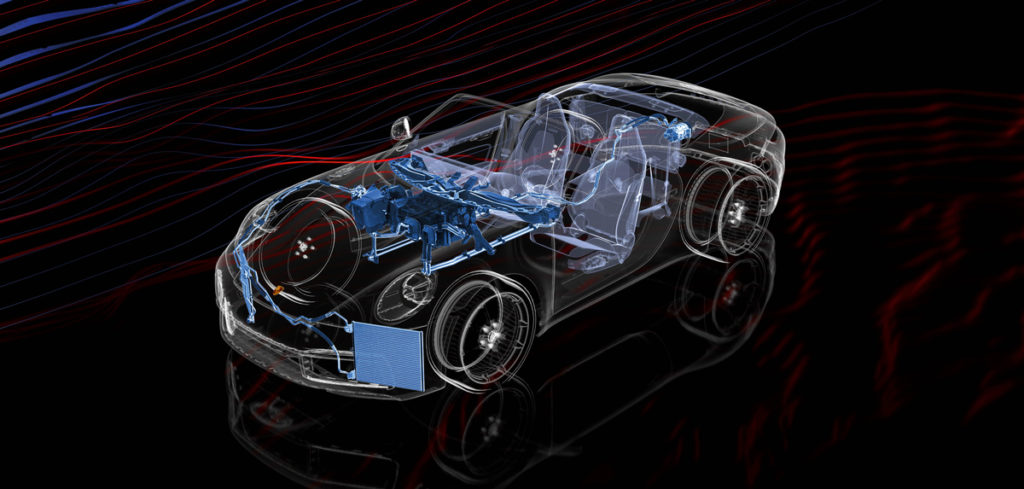Ensuring occupants remain comfortable in an open top vehicle, regardless of the weather, is no easy task. In the case of the latest Porsche 911 Cabriolet, this issue is addressed through the use of a variety of sensors and extensive data processing.
For example, while cabin temperature is normally controlled by an interior sensor, when the 911’s roof is opened, this sensor is suppressed. The climate control system processes 350 signals in half second intervals, drawing data from both internal and external sensors, while communicating with a total of 40 different interfaces, to ensure the occupants feel little difference roof up or roof down.
Sensors continuously record parameters such as outlet, outside and coolant temperatures as well as engine speed, insolation and vehicle speed. The interfaces relevant to the climate control unit include the control units for the engine, soft-top, doors, and seats. This data stream is used to continuously calculate the optimum air temperature, air outlet volume, and air distribution in the open-top interior.
Porsche has also moved away from the traditional scenario that gives occupants warm feet and a cool head when the roof is dropped in wintertime. Instead, it said it has engineered the system to evenly distribute warm air via the central air vents, creating a ‘veil’ of air around those in the car.



